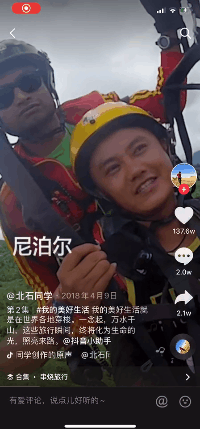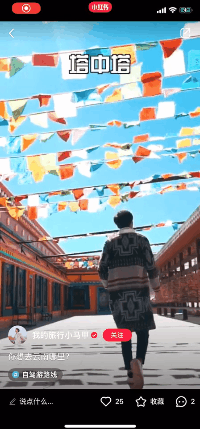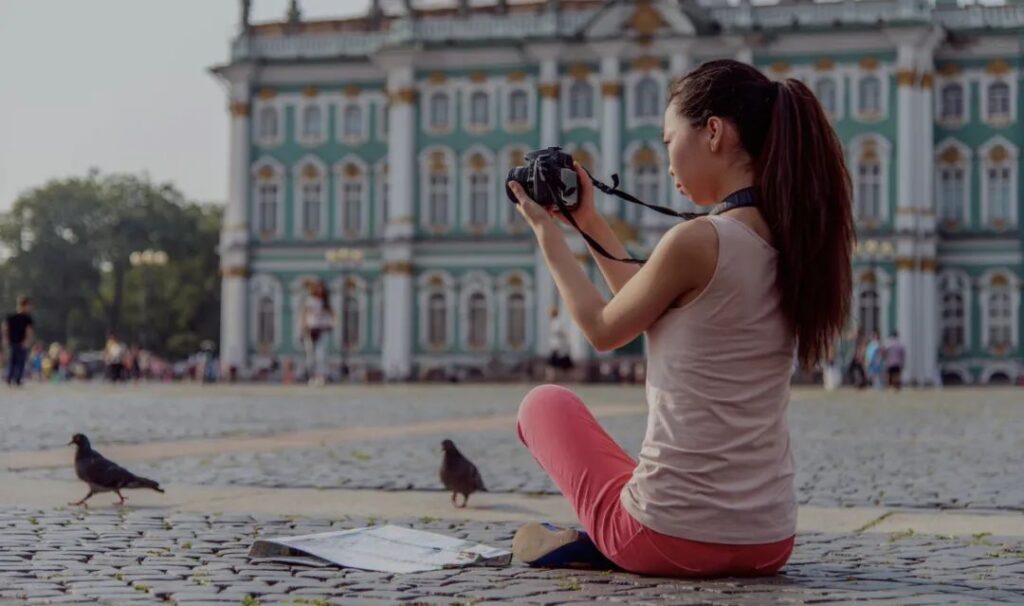This post originally appeared on PARKLU.
Few industries have been hit by the COVID-19 pandemic as hard as tourism. Anxiety over the virus has undermined some of the assumptions the travel industry relies on. Consumers are understandably reticent about airports, flights, and crowds. Travel restrictions and tightened visa policies have made travel less convenient, and in some cases impossible. And with travel shut down, tourism and hospitality businesses have slashed budgets.
According to Chinese media sources, the slump has cost an estimated $420 billion in lost revenue in 2020 so far. For this, a downturn in the industry would already mean postponed or canceled campaigns and lost earnings. With enforced quarantining on top of all that, Chinese travel influencers haven’t even been able to do their jobs. And of course, their audiences have also spent much of 2020 unable to leave their homes, let alone travel.
So what have Chinese travel influencers been doing as their industry has stalled? And with the May Day holiday representing the first milestone on the Chinese travel industry’s long road to recovery, are Chinese travel influencers starting to get back to “normal”?
KOLs coping with change
Canceled trips are the most obvious cost of COVID-19 for Chinese travel influencers, but the reality is a multi-faceted disaster for influencers all around the world. KOLs make their money from a variety of sponsorships and endorsements of travel accessories, accommodations, bookings platforms, and so on—and in each of these areas, business is down if not completely at a standstill.
With no travels to report on, many Chinese travel influencers have filled the gap by pivoting to more general lifestyle content. They haven’t necessarily abandoned travel content, rather they’re combining photos and videos of travels from their archives with new content. Many have simply carried the conversation with their followers from the road into the home, discussing the challenges of quarantine and contrasting the benefits of having some downtime with their usual hectic schedule.

Chinese travel influencer @猫力molly partnered with skincare brand IPSA.
For many KOLs, the transition has been relatively seamless, and some KOLs have been able to keep making income through endorsements unrelated to travel. For example, Weibo KOL @猫力molly, who has over 7 million followers, recently partnered with skincare brand IPSA for an ad that interspersed footage of her previous travels with scenes shot in her home as she reflects candidly on dealing with the changes since COVID-19 hit.
This proves that even when grounded, Chinese travel influencers are still proving attractive partners for consumer lifestyle brands in general. Especially as China has moved beyond the acute phase of lockdown and public health crisis, brands have been freed up to show a more hopeful face. The aesthetics and optics of travel—blue skies, nature, colorful settings, and relaxed smiles—are a perfect fit. Popular travel industry influencer @北石同学 proved that point in April when he featured in a series of photos for a promotion for Activia smoothies.
KOLs and the long road to recovery
The May Day Golden Week will be the first major test of Chinese consumers’ willingness to venture out for travel. A Trip.com survey suggests that May Day will represent a clear step forward on a long road to recovery for the travel industry. Conducted in late March, the survey revealed that 16 percent of consumers said they would be ready to travel by May. Around 90 million were expected to have traveled, a 50 percent drop year on year for Golden Week.
Businesses with a stake in Golden Week bookings, including OTAs and hotels, are engaging KOLs to help drive interest up. Trip.com has featured KOL content on its booking platform, including May Day-related, live streams with travel influencers like Cheng Yuechuan and @北石同学.
The next time Chinese travelers pack their bags, chances are they’ll be heading somewhere within China’s borders. Ninety percent of those who told Trip.com they would travel for the May Golden Week said they would be traveling domestically. Some of the destinations tipped to see an influx of domestic tourists include Hainan, Yunnan, Shanghai, Chengdu, and Chongqing.
Some Chinese travel influencers are lining themselves up with the anticipated boom in domestic travel by posting about Chinese destinations. Weibo user @全球旅游攻略 has been posting about a variety of Chinese destinations, including content about Chongqing labeled with the hashtag “Chongqing Welcomes You”. Other Chinese travel influencers are “traveling” in their hometowns, such as @我的旅行小马甲, who has been telling stories about days out with his family in their native Qingdao.

Chinese travel influencer @北石同学

Chinese travel influencer @我的旅行小马甲
Leveraging influencers to rebuild your brand
The lingering concerns over COVID-19 will bring some notable changes to the way Chinese people travel, at least in the short term. Brands and tourism administrations should anticipate the opportunities this will throw up, and they should partner with travel KOLs to promote their destinations and services.
For example, one legacy of COVID-19 is that travelers are going to spend more on hotels to ensure a higher standard of hygiene and service. According to Trip.com’s report, four and five-star hotels accounted for 55 percent of the accommodation booked. For a great example of a timely promotion, look at Marriott’s tie-up with KOL @旅游约吗 in mid-April. The blogger ran a prize draw contest for her 11 million-plus followers in conjunction with six Marriott hotels. Staycations could be big business in the coming months, and hotel brands can use KOLs to great effect for promoting any special offers.
Chinese travel influencers can also be valuable in rebuilding consumer confidence that it is indeed safe to travel. This could be helpful to airports, hotels, restaurants, tourism administrations, and pretty much everyone with a stake in the travel business. For example, ahead of May Day, @旅游约吗 posted a reminder about the importance of traveling safely, illustrated by a series of photographs depicting workers cleaning surfaces and public spaces.

Chinese travel influencers can be valuable in rebuilding consumer confidence in a post-pandemic world.
Another feature of the expected domestic travel boom will see Chinese travelers driving rather than flying. According to a report from China Tourism Academy, only 14 percent of respondents said their first post-lockdown trip would involve a flight. Other likely trends will see more independent travel and people traveling in smaller groups.
As confidence returns to the travel market, travelers may also start going further afield but looking more to destinations rich in open space—think Inner Mongolia, and China’s western and northwestern provinces including Qinghai and Ningxia. Local travel administrators and businesses should look to grasp any opportunity to work with KOLs to brand their destination as a must-go in the post-lockdown era.
Similarly, many international destinations will be looking to rebuild their tourism industries as they emerge from COVID-19 quarantines, and at least some will have an eye on bringing Chinese tourists back as soon as possible. This isn’t on the horizon now, but by the fourth quarter travelers may be regaining their appetite for international travel, at least to countries that are perceived as “safe.” Southeast Asian nations like Thailand and Vietnam will likely be among the first to court Chinese travelers, and their tourism agencies should work with travel KOLs to help with messaging.
Most travel KOLs haven’t yet resumed anything like their regular travel schedule, but that’s likely a reflection of the degree to which tourism organizations have cut back on trips in the short term. However, there are certainly signs that collaborations are getting underway again, with lots of opportunities for brands to get creative and leverage influencers’ audiences. And Trip.com’s survey does suggest a clear path towards the restoration of traveler confidence, with around 60 percent of respondents saying they will feel ready to travel by August. May Day Golden Week proved to be a step in the right direction, and China’s KOLs will be doing their part to help the recovery pick up steam.



